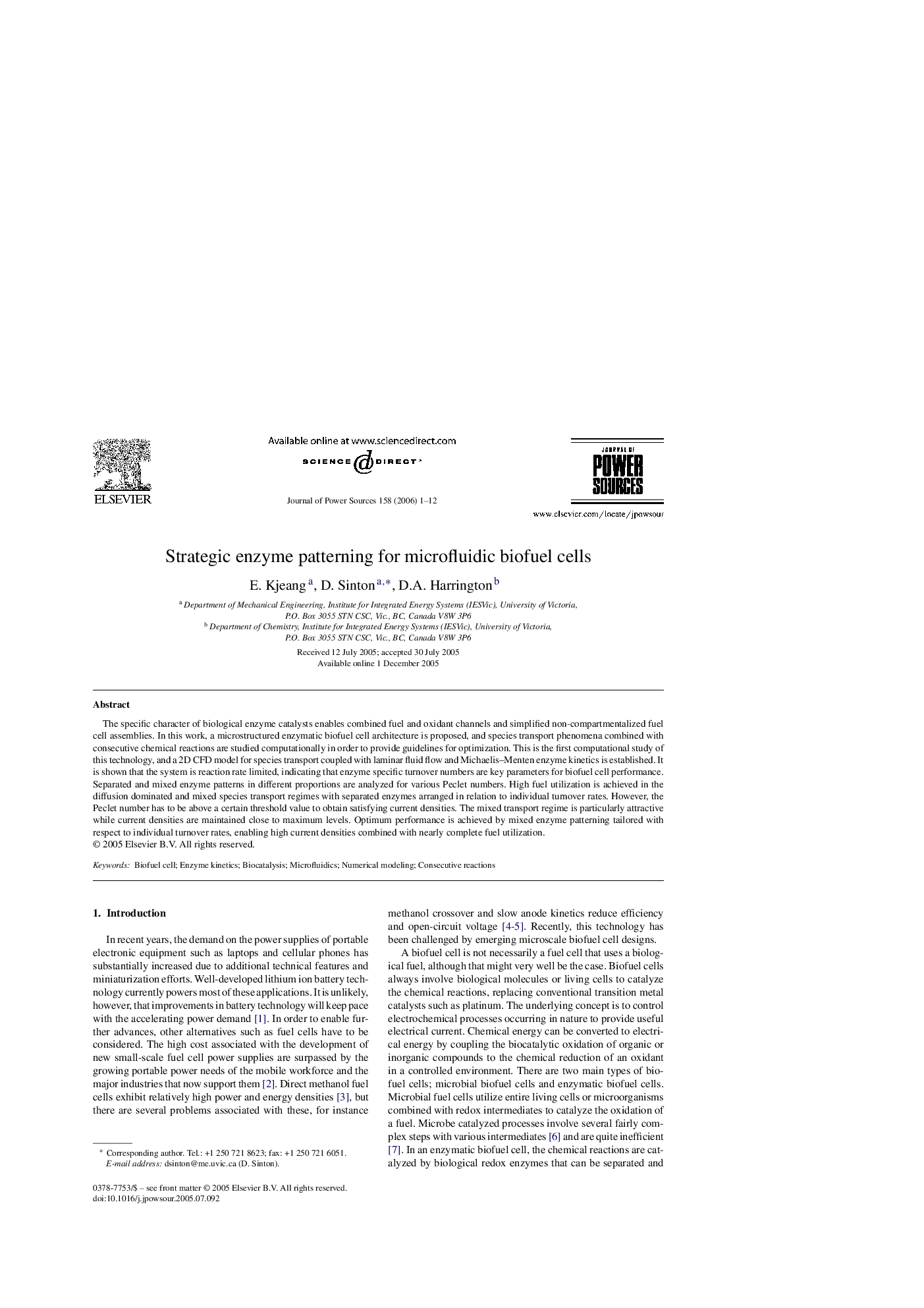| Article ID | Journal | Published Year | Pages | File Type |
|---|---|---|---|---|
| 1287537 | Journal of Power Sources | 2006 | 12 Pages |
The specific character of biological enzyme catalysts enables combined fuel and oxidant channels and simplified non-compartmentalized fuel cell assemblies. In this work, a microstructured enzymatic biofuel cell architecture is proposed, and species transport phenomena combined with consecutive chemical reactions are studied computationally in order to provide guidelines for optimization. This is the first computational study of this technology, and a 2D CFD model for species transport coupled with laminar fluid flow and Michaelis–Menten enzyme kinetics is established. It is shown that the system is reaction rate limited, indicating that enzyme specific turnover numbers are key parameters for biofuel cell performance. Separated and mixed enzyme patterns in different proportions are analyzed for various Peclet numbers. High fuel utilization is achieved in the diffusion dominated and mixed species transport regimes with separated enzymes arranged in relation to individual turnover rates. However, the Peclet number has to be above a certain threshold value to obtain satisfying current densities. The mixed transport regime is particularly attractive while current densities are maintained close to maximum levels. Optimum performance is achieved by mixed enzyme patterning tailored with respect to individual turnover rates, enabling high current densities combined with nearly complete fuel utilization.
